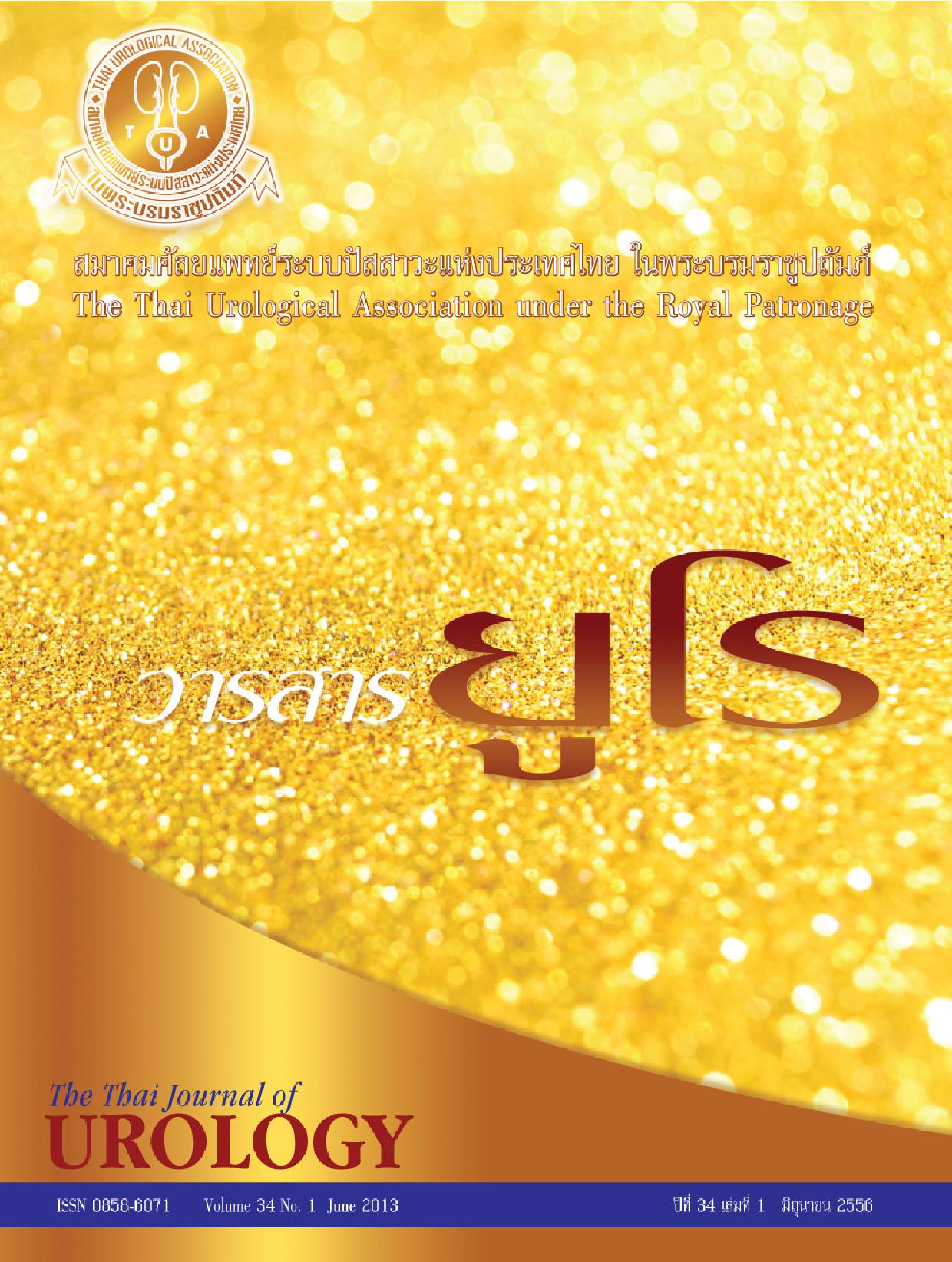Characteristics of ureteral stent encrustation in non-stone forming patients
Keywords:
ureteral stent encrustation, double-J stent encrustation, non-stone forming, encrustationAbstract
Objective: To determine the composition of crystalline encrustations on polyurethane ureteral stents inserted in non-stone formers.Material and Method: Forty-eight self-retained polyurethane ureteral stents from non-stone formers removed by cystoscope between September 2012 and January 2013 were studied. Mean age of the patients was 60 years old. The primary diseases of the patients were pelvic malignancy, ureteric stricture and endometriosis, which caused ureteric obstruction. The specimens were collected by scraping all of the encrusted contents from the outer and inner surfaces, then analyzing them with Fourier-transform infrared spectroscopy.
Results: All the encrustations in non-stone formers were mixed stones. Carbonate Apatite (dahllite) mixed with weddellite was found in 6 of 48. The major mineral constituents of stones were dahllite and cystine accounting for 33% (16/48) and 16% (8/48). The highest prevalence was dahllite at 60% (29/48).
Conclusion: Dahllite was the most frequent composition found in non-stone forming ureteral stent encrustation. Prevention of encrustations should be studied further.
Downloads
Published
2013-06-01
How to Cite
Huabkong, M., Bunyaratavej, C., Ungchareonwattana, W., Phajik, S., & Sittimak, R. (2013). Characteristics of ureteral stent encrustation in non-stone forming patients. Insight Urology, 34(1), 1–12. retrieved from https://he02.tci-thaijo.org/index.php/TJU/article/view/63147
Issue
Section
Original article



